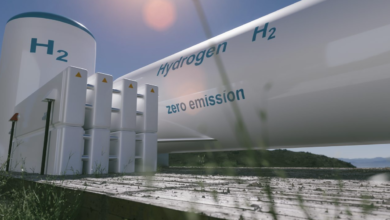Emissions financed: Banks in the G7 countries pollute as much as 7 Italy

ReCommon’s report on the financed issues: 2.7 GtCO2
The 29 largest banks in the G7 countries finance more greenhouse gas-generating assets than Italy, France, Germany and the UK together. The resources injected into some carbon-intensive sectors are particularly important: even if they represent only 6% of the total, they are responsible for half of the total financed emissions, reaching 2.7 billion tons of CO2 (GtCO2).
These figures have so far not shown any significant improvement, despite the commitments made by these countries to limit the funding of fossil fuels. This is underlined by a recently published ReCommon report on 2022 data, the latest available.
However, something is also beginning to move at the level of large credit institutions. Crédit Agricole and BNP Paribas, two of the banks that provide the most loans, investments and insurance subscriptions to companies and carbon-intensive projects, have just announced a significant change in policy, discontinuing funding for conventional oil and gas projects.
Emissions financed by X-ray
The picture highlighted by ReCommon, however, shows a banking landscape still well intertwined with fossils and polluting assets. The issues financed by these institutions in the G7 countries are “huge” and, despite the increasingly stringent reporting obligations and the increasing focus on the sector’s exposure to climate risk, these banks “do not disclose sufficient data on their exposure to carbon-intensive industries or do not adequately mitigate climate risks”. Neither governments nor the relevant supervisory authorities, ReCommon points out, have taken “sufficient action” to limit the funding of fossil fuels and highly polluting industries.
Above all, 4 more carbon-intensive sectors end up under the lens: agriculture, oil and gas, mining and energy utilities. Funding for these sectors is only 6% of the total, but more than 50% of the total are financed. There is also a need for really effective and transparent approaches. In their reporting, 80% of the banks analysed refer only to emissive intensity, leaving out absolute volumes of greenhouse gases.
“Relying solely on intensity targets can be detrimental to climate action as intensity indicators reported by a bank can decrease while absolute emissions increase,” the report says. “Instead, objectives should include both absolute and intensity targets. Absolute emission reporting also allows better monitoring and verification of the validity of decarbonisation progress”.





